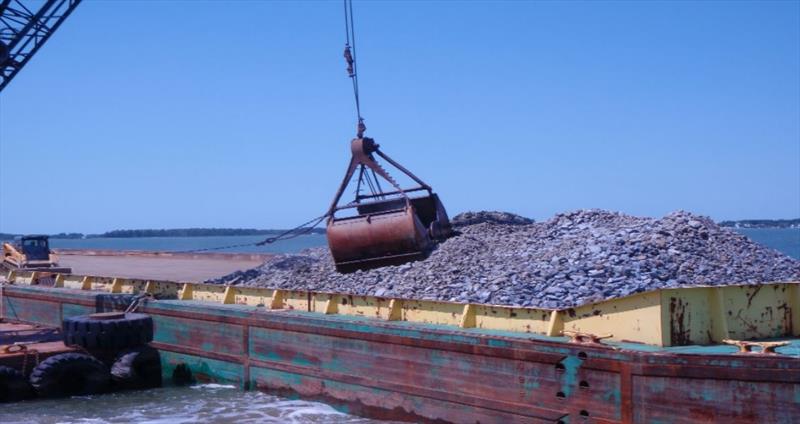
Pros and cons of Oyster Reef Alterative Substrates
by NOAA Fisheries 21 Jun 2018 13:25 UTC

U.S. Army Corps of Engineers places rock mixture on restoration reefs in Harris Creek, Maryland © U.S. Army Corps of Engineers
If you were an oyster, would you prefer porcelain or concrete? Limestone or sandstone? Or good old-fashioned oyster shells?
When it comes to constructing oyster reefs as part of large-scale projects in the Chesapeake Bay, restoration partners have traditionally favored the use of oyster shell. But fresh oyster shell—from shucking houses and shell recycling programs—is a limited resource, so efforts have also included shell dredged from historic deposits, shell mined in Florida, non-oyster shell from Atlantic coastal fisheries, and stone. Each of these materials—"substrates"—has upsides and downsides.
What other options exist, and what are their pros and cons? A new document, the Oyster Reef Alternative Substrate Literature Review, includes brief overviews of previously published research on porcelain, concrete, coal ash, sandstone, stone, limestone, and surfclam shells, and includes a look at new engineered options entering the market.
The document does not advocate for any particular substrate; it simply illustrates a range of alternatives that can be used in a variety of situations. Every restoration project is unique, and input from a variety of perspectives is needed as project planners decide on the best way forward for each specific project and location.
NOAA continues to provide needed science—including habitat mapping and analysis—to inform large-scale oyster restoration in the Chesapeake Bay, along with other federal and state agency partners and nonprofit and academic institutions, as efforts proceed toward the Chesapeake Bay Program goal of restoring oysters to 10 Bay tributaries by 2025.